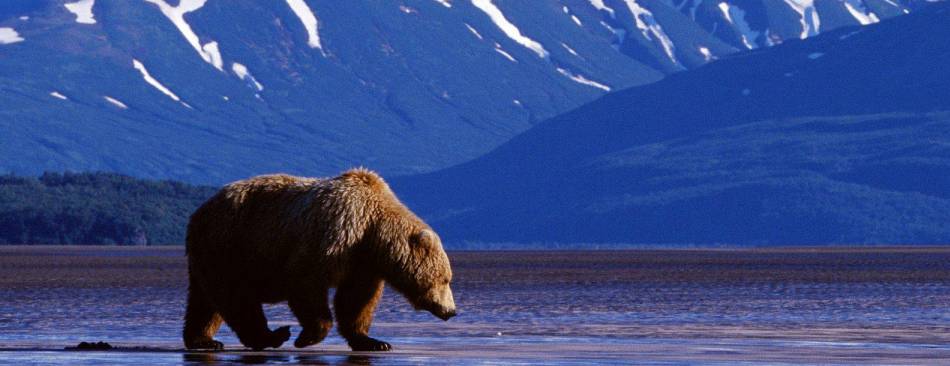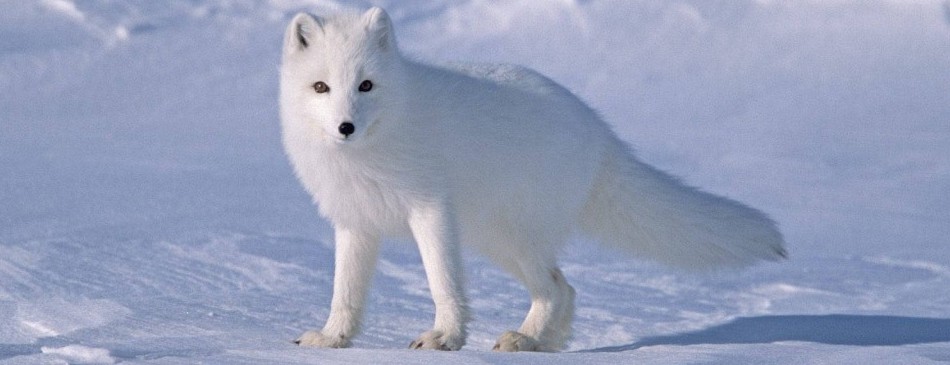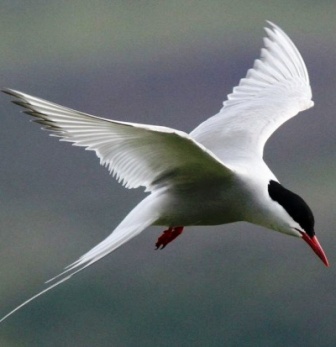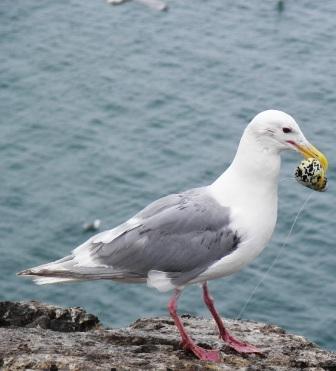Three large gulls are commonly found in Alaska. These are the glaucous-winged gull, glaucous gull, and herring gull. These gulls are closely related, and hybrids are not uncommon. Gulls tend to colonize and are very aggressive, often exhibiting much antagonism toward members of their own and other species.
Glaucous-winged gulls are the common “seagulls” familiar to many on the south coast of Alaska. Glaucous-winged gulls breed in Alaska from the British Columbia border to the end of the Aleutian chain and northward to Bristol Bay, western Nunivak Island, and the Pribilofs. Adults have white heads and bodies, pink legs, brown eyes, gray backs, and wing tips typically the same shade of gray as the back. Their heads are heavily flecked with gray in winter. Recently fledged juveniles are dark-brownish gray. The plumage becomes lighter each year to age 4, when adult coloration is acquired and they first begin breeding. Adults typically live about 10 years and average 23 to 26 inches in length. Glaucous-winged gulls are found principally in intertidal coastal habitats, although they follow major rivers and salmon streams inland. They feed in circling flocks over fish schools and floating waste. In late winter and early spring, glaucous-winged gulls appear at their colony sites, often before the snow melts.
Glaucous gulls breed along the coast of western and northern Alaska from the Yukon-Kuskokwim Delta to Demarcation Point on the Canada border and on several islands in the Bering Sea. The center of abundance of glaucous gulls in Alaska is the Yukon-Kuskokwim Delta and the east side of the Bering Strait. The largest breeding concentration of glaucous gulls is on St. Matthew/Hall Island. Glaucous gulls are common in the Aleutians in winter. Glaucous gulls are somewhat larger than glaucous-winged gulls, have white bodies and heads, yellow eyes, gray backs, and white wing tips. Adults average 25 to 31 inches in length.
Herring gulls have white heads and bodies, gray backs, typically yellow eyes, and black wing tips with small white spots. Total length is 22 to 25 inches. Juvenile herring gulls are difficult to tell from juvenile glaucous-winged gulls. Herring gulls are usually found breeding in low numbers on boreal lakes and rivers in interior Alaska. Some herring gulls, however, breed on the south coast of Alaska, notably in Upper Cook Inlet near the mouth of the Susitna River; at Dry Bay, mouth of the Alsek River, near Yakutat; and in Glacier Bay in recently deglaciated fjords. They nest on flat gravel bars, sloping grassy hillsides, and on nearly vertical cliff faces.
Terns are small seabirds related to gulls. In contrast to the languid gull, terns contend for the title of most superb aerialists in the avian realm. Terns are capable of hovering in the air like a hummingbird, flipping over backwards, and then slicing down into the water like a pelican. Although they may scavenge occasionally, terns prefer to hunt small fish which they spot from the air and plunge into the water to catch. While their acrobatics are impressive, it is their endurance that is truly staggering. The Arctic Tern has been documented migrating up to 50,000 miles annually. In fact, the Arctic Tern’s annual migration from boreal and high Arctic breeding grounds to the Southern Ocean may be the longest seasonal movement of animal. The migration patterns of the Aleutian Tern remain largely unknown, but they are suspected to be long-distance travelers as well. Alaska is just one stop on the long journey for terns, but it is an important one. Terns come to Alaska to lay their eggs and raise their chicks. They nest on the ground on beaches, gravel bars, and lake shores, laying their eggs in shallow depressions called scrapes. The eggs are camouflaged to look like little rocks and are hard to see. The Aleutian tern (Onychoprion aleutica) frequently associates with the Arctic tern, which it closely resembles. While both species sport a black cap, the Aleutian tern may be distinguished by its white forehead (although juvenile Arctic terns also have white foreheads). During breeding season, the Arctic terns have bright red bills, feet, and legs while those of the Aleutian tern are black. Feeding primarily on small fish, the Aleutian tern will locate them by sight and use one of three fishing techniques. It may swoop and pick from the surface of the water, hover and dive, or sit on the surface and dip. An excellent flyer, terns also snatch insects in mid-air. The Aleutian tern breeds in wide ranging coastal colonies only in Alaska (from the Kasegaluk Lagoon along the northwest coast to Glacier Bay) and eastern Siberia. The largest colony (an estimated 1/3 of the population in Alaska) is believed to nest on the Yakutat Forelands in the Gulf of Alaska. The winter range of the Aleutian tern is largely unknown. Although Alaskan and Siberian populations are not well monitored, both are thought to be in decline.
|








